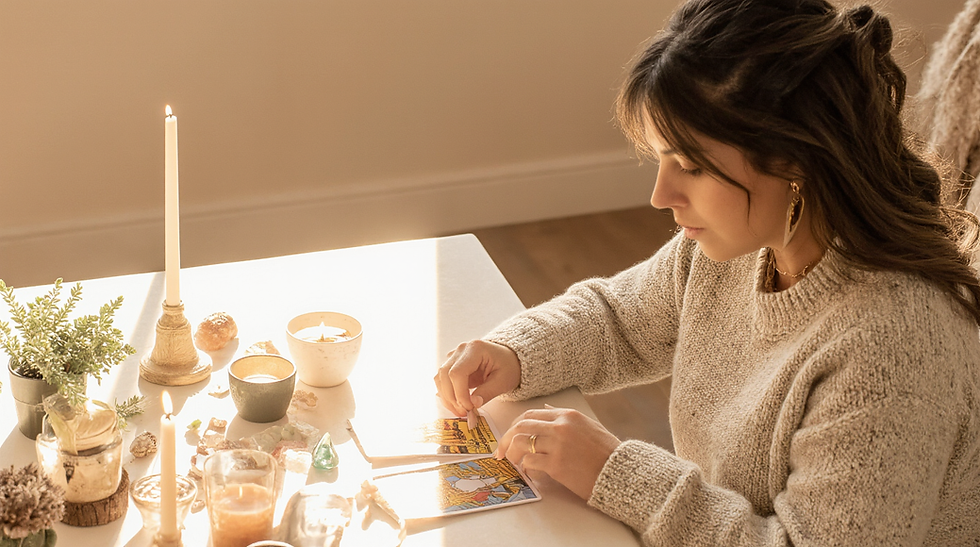Tarot as therapy? Understanding the line between insight and healing
- Maria M Torres Z
- Nov 3
- 2 min read

Tarot as therapy?
As we’ve discussed before, tarot is an amazing tool for self-reflection. The biggest "aha" moments I’ve witnessed with clients often appear when we explore fears and subconscious patterns, the things that live beneath the surface but quietly shape our choices.
Tarot can open emotional doors, reveal patterns, and help us make sense of what we feel but cannot see. That’s why I believe tarot becomes even more powerful when it’s paired with therapy, when both are approached with the same intention: healing from the inside out.
Tarot as a mirror: understanding your inner world
Tarot reflects your inner world. It helps you become aware of what’s happening beneath your conscious mind. There’s a profound realization when someone, or something, like the cards, mirrors back what’s already true inside you.
The cards can bring subconscious emotions or repeating patterns to light, which is incredibly powerful on its own, but when you bring that awareness into therapy, something deeper happens: you gain context, integration, and emotional release.
Think of it as awareness work, the “aha” moment that invites you to take action, seek help when needed, and move forward with more compassion and clarity.
Curious about what your cards might reveal?
When Tarot insights lead to healing
There’s a subtle but powerful bridge between understanding and transformation. When you gain insight through a tarot reading, when you suddenly see what was hidden, something changes inside. That awareness alone can bring emotional release, clarity, or even peace.
Many clients describe crying after a reading, feeling lighter, or experiencing validation they didn’t know they needed. That’s a kind of energetic healing, your system integrating what was unseen. But it’s important to remember: tarot creates awareness; therapy provides the tools to process it safely.
How to integrate your Tarot reading
A tarot reading doesn’t end when you leave the session; that’s actually when the real work begins. The cards have stirred something in you: emotions, memories, ideas, possibilities. What you do next helps you integrate what came up and turn insight into transformation.
Here’s how you can support yourself after your reading:
Take quiet time afterward. Avoid jumping straight back into work or scrolling your phone. Give your emotions space to breathe.
Notice what lingers. Which card, phrase, or message keeps replaying in your mind? That’s usually where your focus wants to go.
Journal your reflections. You can use prompts like:
What part of my reading resonated the most?
How do I feel now that I’ve heard this message?
What’s one action I can take this week to support my healing or next step?
Let the message unfold. Insights often deepen over time. You might notice signs, dreams, or synchronicities connected to your reading.
Conclusion:
Tarot can be the first step in your healing journey. It offers a mirror to your inner world, helping you become aware of the emotions, patterns, and stories that are ready to evolve.
Beyond reflection, a tarot reading can also bring a surge of motivation and excitement, that spark that reminds you that change is possible and that your dreams are within reach.
When you pair insight with intention, tarot becomes more than guidance; it becomes momentum for your next chapter of healing, growth, and self-trust.
Ready to take the next step on your journey?


























































Comments